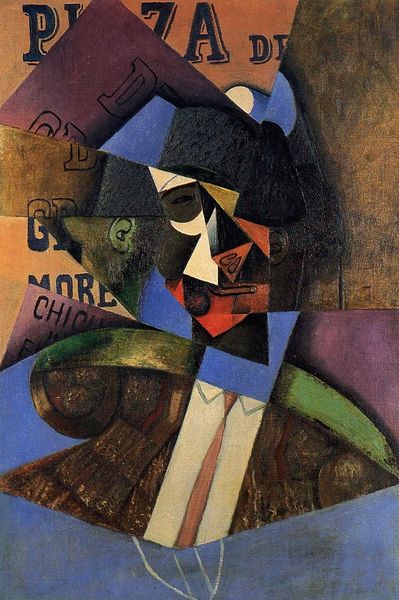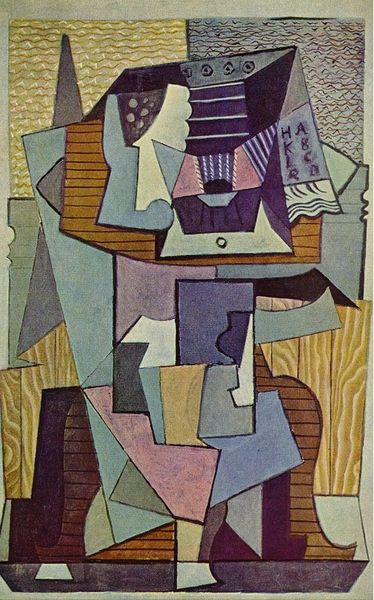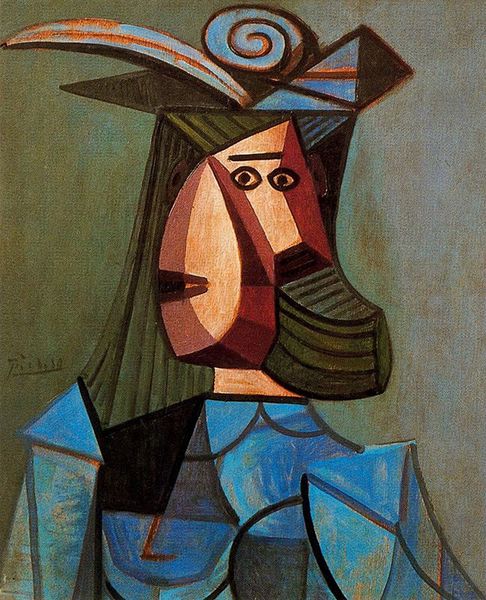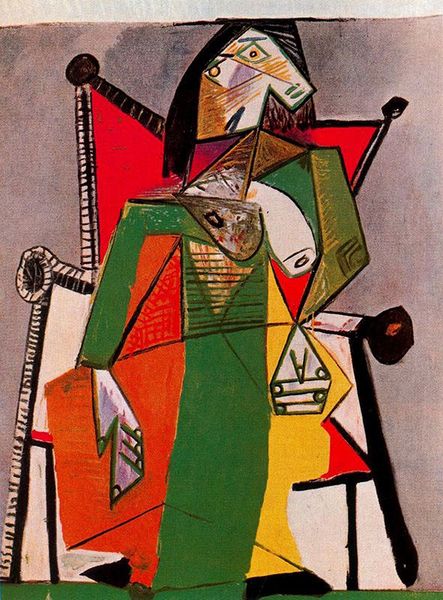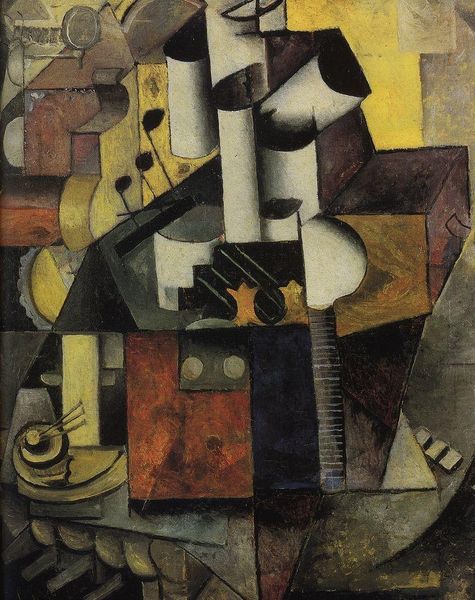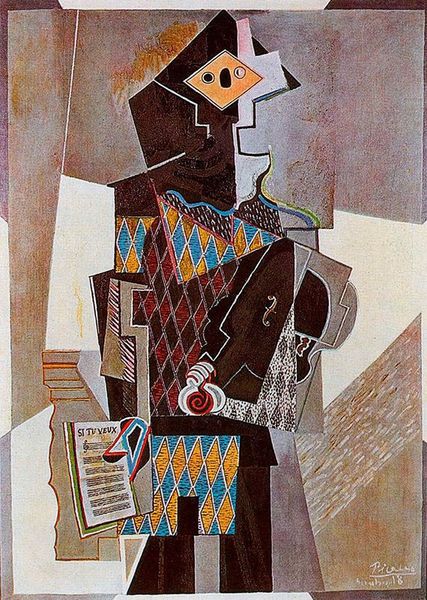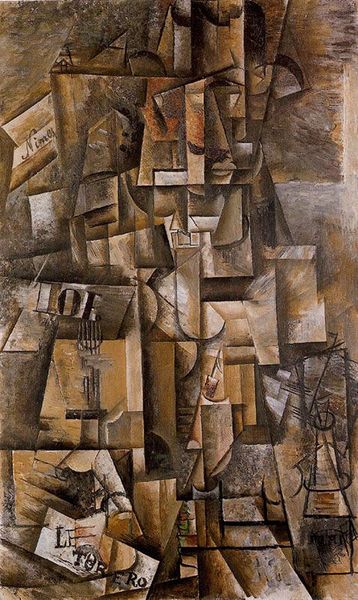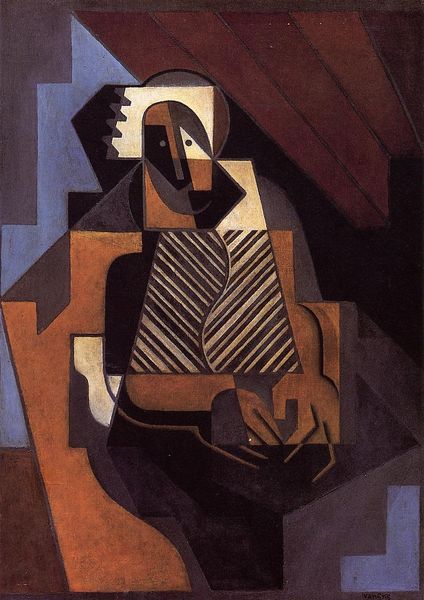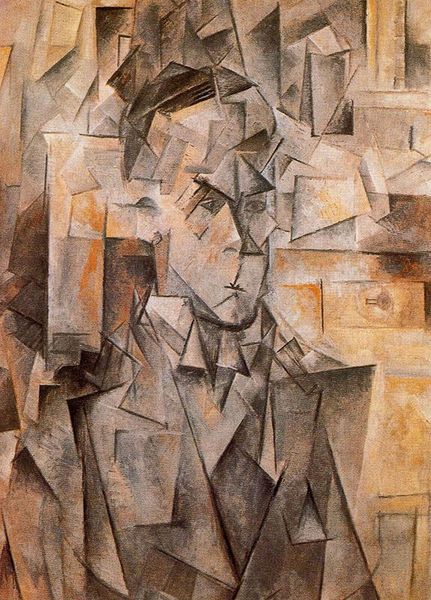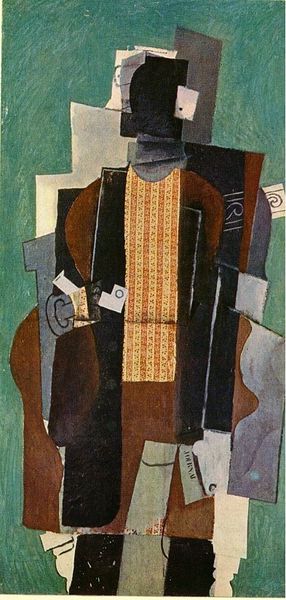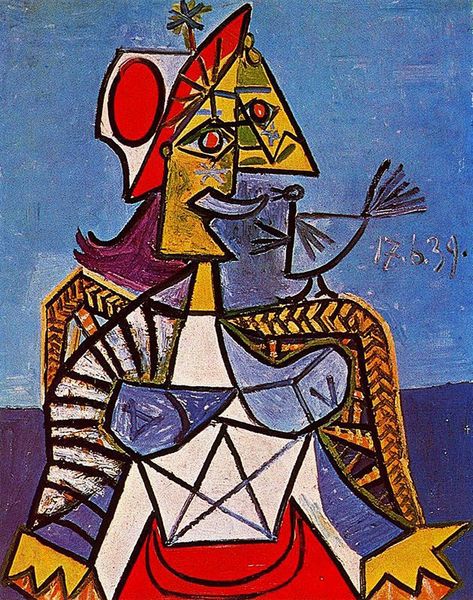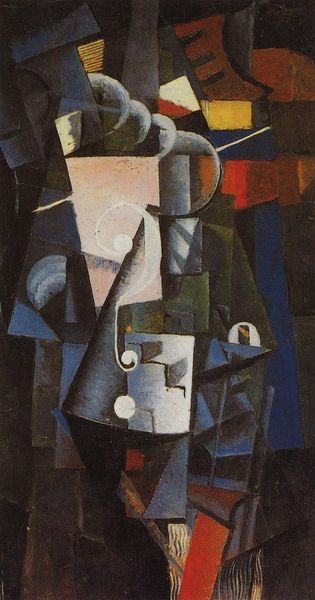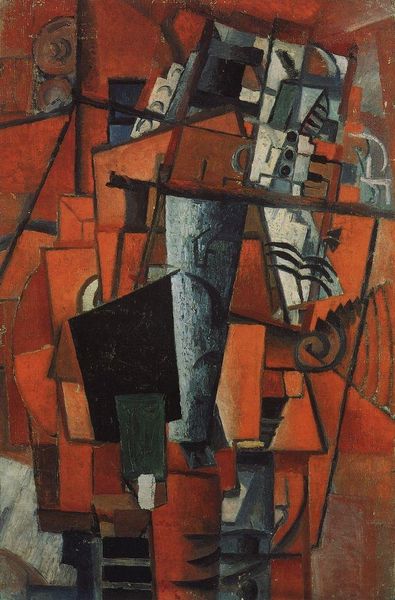
oil-paint
#
portrait
#
cubism
#
oil-paint
#
geometric
#
modernism
Copyright: Public domain US
Editor: This is Picasso’s *Harlequin*, painted in 1918 using oil paints. Looking at it, I get this peculiar feeling. Like a circus reflecting on itself. So many angles, shapes… it’s almost a deconstructed portrait. What jumps out at you? Curator: It whispers of hidden identities, doesn't it? The Harlequin, the classic trickster figure, reimagined through Picasso's fractured lens. For me, it is not only Picasso playing with form but a visual riddle hinting at the artist’s own evolving self, and, perhaps, a longing for a return to order after the wild experiments of his earlier cubism. Look how the guitar emerges from the fractured planes. Music, identity, all subtly intertwined. Do you find yourself drawn to a specific element? Editor: I keep coming back to the face; how one side is light, the other almost shadowed, like two sides of a coin or a mask pulled halfway off. Curator: Exactly! And those diamond patterns on the Harlequin’s costume? They mimic the fractured composition of the painting itself. Almost a knowing nod, wouldn’t you agree, from Picasso to the viewer, inviting us into his game of perception. Do you think it is mocking? Editor: No, no mockery! Perhaps reflective; of our fractured selves, and how art is just one attempt at putting all these shards back together? Curator: Perhaps we are both correct: mockingly reflective? This invites another look at the canvas! Art isn’t always about answers, darling. Sometimes, it’s about holding a mirror to the questions.
Comments
No comments
Be the first to comment and join the conversation on the ultimate creative platform.
